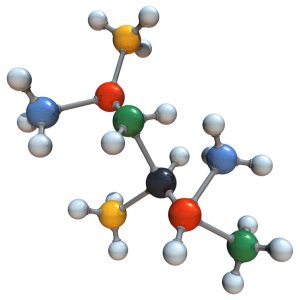7 Benefits of Molecular Imaging
April 1, 2014
 Have you heard of molecular imaging but are not quite sure what it's all about? Or has your doctor ordered molecular imaging for you?
Have you heard of molecular imaging but are not quite sure what it's all about? Or has your doctor ordered molecular imaging for you?
If your answer is yes, read on for some pertinent information about this diagnostic procedure and how it is being used.
What is Molecular Imaging?
Molecular imaging is a sort of medical imaging that is used to provide detailed images of what is going on inside your body at the molecular as well as the cellular level.
X Rays, computed tomography, otherwise known as CT, and ultrasound provide images of physical structure. But molecular imaging lets your doctor see how your body is functioning at a cellular level. It also measures your biological and chemical processes.
Molecular imaging includes nuclear medicine, a diagnostic procedure that uses small amounts of radioactive materials called radiopharmaceuticals to both diagnose and treat disease. When nuclear medicine imaging is used, radiopharmaceuticals are detected by special types of cameras that work with computers to provide exact images of specific parts of your body. Nuclear medicine is sometimes used to treat various types of cancer, as well as other diseases.
Molecular imaging provides unique insights into your body that will make it possible for doctors to better personalize your treatment.
As far as helping to arrive at a diagnosis, molecular imaging can:
- Give the doctor information that can't be attained with other imaging technologies or that would call for more invasive procedures such as surgery or biopsy.
- Identify diseases in their earliest, initial stages and pinpoint the precise location of a tumor, often before you even have any symptoms and before any type of problems can be detected with other types of diagnostic tests.
Benefits of Molecular Imaging
- It shows the extent of the condition and will detect whether or not the disease has spread to other parts of your body
- It allows the doctor to choose the best and most effective therapy based on the unique biologic characteristics of the patient, along with the molecular properties of a disease or tumor.
- It will assess the patient’s response to certain drugs that might be used for treatment.
- It will accurately determine whether or not a treatment regimen would be effective.
- It can quickly adapt treatment plans when there are changes in the patient’s cellular activity.
- It makes an accurate assessment of disease progression.
- It will identify whether or not a disease has recurred and be helpful in managing care.
These advantages make molecular imaging a cutting edge technology that equips doctors with more information than possible with other diagnostic methods.
Molecular imaging is noninvasive, painless and safe. It might be used to both diagnose and treat such diseases as cancer, Alzheimer's Disease, Parkinson's Disease, bone disorders, lung disorders, thyroid and kidney disorders and much more.
It is a classic example of modern technology at its best.


